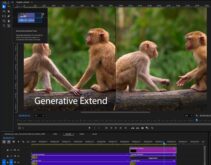Your encoding ladder is the set of encoding parameters that you use to create the various files that you deliver adaptively to your web viewers. These encoding parameters can live in your on-premise encoder, in your cloud encoder, or in your online video platform (OVP).
When optimally configured, your encoding ladder lets you efficiently deliver great quality video to viewers on all devices and over all connection speeds. When encoding ladders are suboptimal, data rates can be too high, wasting bandwidth and lowering the quality of experience (QoE) of those watching on lower bitrate connections. If rates are too low, file quality can be subpar, reducing the QoE of all viewers. Other improper configurations can cause compatibility issues, or playability issues, or other quality issues.
How optimal is your encoding ladder? Well, here are six signs that you might have a problem.
1. You use the same encoding ladder for all content types (and you distribute multiple disparate types of videos). You know that different types of videos encode more or less efficiently depending upon content. Talking heads encode efficiently, soccer games much less so.
Many organizations distribute distinctly different types of content. As examples, broadcasters stream talk shows, sports, and sitcoms, movie distributors stream animated movies and action thrillers, and enterprises stream screencam and PowerPoint videos. If these organizations use the same encoding ladder for all classes of content, it almost certainly means that the ladder is ill suited for one or more types.

SSIMplus scores show how different types of videos encode more or less efficiently. The screencam achieves 90%+ quality at below 1000 kbps, Big Buck Bunny reaches 90% at 1500 kbps, while Tears of Steal needs 3000 kbps to reach the same threshold.
Netflix recently transitioned to per-title optimization, using customized encoding parameters for each title. While this is impractical for most other organizations, category specific encoding can deliver much of the same benefits with much less complexity.
2. You didn’t use objective quality metrics like peak Signal-to-Noise Ratio (which Netflix relies on), or other, more modern metrics like VQM or SSIMplus to formulate your ladder. The essential purpose of your encoding ladder is to deliver excellent quality video. While objective quality metrics aren’t perfect, they provide a very useful measure of the existing quality of your video files.

Objective quality benchmarks help identify when streams are redundant. For example, the 6500 kbps and 7500 kbps streams add significant bandwidth (and cost), but very little quality as measured by the SSIMWave Quality of Experience Monitor (SQM). This analysis makes it easy to eliminate the two higher quality streams from the encoding ladder.
3. You haven’t changed your encoding ladder since 2012. Much has changed since 2012, like higher throughput, larger resolution screens (particularly on mobile devices), and increasing codec efficiencies. If you haven’t changed your ladder since 2012, it might be worth a look.

Old ladders don’t reflect new realities, and using TN2224 without modification can get quite pricey.
4. You’re using TN2224, or recommendations from your cloud provider or OVP without modification. As Netflix clearly established, there is no one-size-fits all encoding ladder. Did your OVP or cloud provider actually test your typical source footage when creating their presets? If not, isn’t this worth a second look?
5. You’ve never had your encoding ladder reviewed by a third-party consultant. I make mistakes, you make mistakes, we all make mistakes. If your encoding ladder hasn’t been reviewed by a third-party, these mistakes could be costing you quality, excess bandwidth costs, or both.
What’s the Answer?
An encoding ladder audit from the Streaming Learning Center (SLC). Though project details vary from engagement to engagement, here’s how it generally works.
What You Provide:
– You supply SLC with the mezzanine files for multiple source clips.
– Presets from your encoder.
– Clips encoded with those presets.
– If possible, access to your encoder. For previous projects, we’ve worked with encoding.com, Elemental Cloud, Elemental Server, Sorenson Squeeze, Telestream Vantage, and several other encoders.
What We Do:
– We review the presets for encoding efficiency, and device compatibility.
– Compute the PSRN, VQM, and SQM values on all encoded files, and evaluate their relative quality.
– Produce a series of test encodes designed to identify the relative efficiency of existing presets, and if necessary, identify alternative configurations.
What You Get:
– You receive a report detailing test results and other findings.
– Specific recommendations for modifying your encoding ladder (or creating alternative encoding ladders for different content types).
– Updated presets or specific recommendations for updating your presets.
Key Benefits:
– Reduce costs by eliminating unnecessary streams and excess bandwidth.
– Increase viewer quality of experience by improving stream quality and efficiency.

LinkedIn Testimonial from movie distributor Cinepolis.
About the Streaming Learning Center
The Streaming Learning Center is a premiere resource for companies seeking advice or training on cloud or on-premise encoder selection, preset creation, video quality optimization, adaptive bitrate distribution, and associated topics. Please contact Jan Ozer at [email protected] for more information about these services.
 Streaming Learning Center Where Streaming Professionals Learn to Excel
Streaming Learning Center Where Streaming Professionals Learn to Excel








